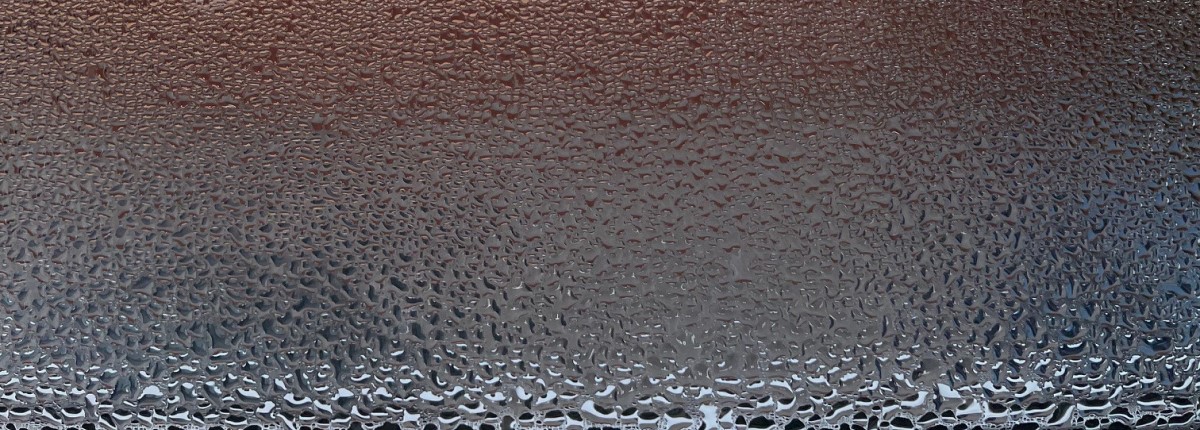
If you are a Tuntum tenant and you have a problem with damp and mould, then please report it by using either the MyTenancy portal, by calling 0115 916 6066 then selecting option 1, or emailing repairs@tuntum.co.uk
You can read our Damp, Mould and Condensation Policy by clicking here.
What are the signs of damp?
Damp problems in houses in the UK are usually most obvious during the winter. If your ceilings are discoloured, your walls cold, slightly clammy or covered in black, speckled marks, or your wallpaper is curling and/or paint flaking, your home needs your attention.
Another sign that there are high levels of moisture in your house or flat is condensation on the windows in the morning, or black mould on frames and around the edge of baths and sinks, where silicone sealant has been used.
Moisture can be a symptom of damp but it can also cause damp, so it needs sorting out. Black mould on fabric also indicates a problem, as does a musty smell, which you’ll often find in cupboards or basements that are damp.
What causes damp?
Penetrating damp
Symptom: brown stains on ceilings or walls
Likely cause: a brown stain on a ceiling, on the inside of an exterior wall or on a chimney breast is most likely to be penetrating damp, which is caused by broken or loose tiles or slates, blocked or leaky gutters, damaged flashing and chimney breasts and dodgy rendering or mortar on outer walls.
Leaking pipes
Symptom: expanding damp patch on ceilings and floors
Likely cause: if your plumbing is leaking, you’ll find an expanding damp patch somewhere on a ceiling or underneath a basin, sink, bath or radiator. Sometimes a long-term, slow trickle from something like a radiator can go unnoticed for years, rotting joists without you ever realising you have a problem until your floor goes spongy.
Condensation
Symptom: condensation on windows, wet walls, peeling paper
Likely cause: condensation occurs when warm, moist air touches a chilly windowpane or a cold external wall, and causes wet windows, and over time, black marks and mould.
Find out more about how you can reduce condensation in your home by clicking here.
High humidity
Symptom: humidity of over 60%, mould and mildew, musty smells
Likely cause: moisture generally is a common cause of damp in the home. It’s generated through normal household activities like cooking, washing, showering, and drying wet laundry without proper ventilation. Other causes of damp – leaking pipes, condensation and penetrating damp, can all increase humidity too.
How to prevent damp
Allow air to circulate
Whether your property is old or new, if you have renewed your insulation you will probably have some kind of mould somewhere if air isn’t circulating efficiently. To keep moisture at bay, open your windows every day and let fresh air circulate around the house.
Place furniture a few inches away from external walls, to allow air to circulate.
Keep curtains and blinds clear of windows if they’re prone to condensation.
Keep temperature steady
Insulating an attic can help create a warmer home, and secondary or double glazing will help to avoid condensation on windows because the inner pane of glass is insulated against the cold air outdoors.
Heat all the rooms in a home to equal temperature, as it’s often the difference in temperature between two rooms that causes window condensation.
Prevent moisture build-up
Close the bathroom door and open the window when showering, or install an extractor fan in bathrooms, so moisture is taken away.
When it’s not raining, open a window in each room for 15 minutes a day.
Cover pans with a lid when cooking to cut condensation on kitchen windows. Switch on the cooker hood fan when using the hob, and leave on for a few minutes when finished, to clear the air. Replace filters regularly or if suitable, wash in the dishwasher.
Dry laundry outdoors when you can, or use an efficient tumble dryer. A condenser dryer doesn’t need a vent to the outside and won’t allow moist air to escape into your home.
Cleaning mould
Mouldy silicone around the bath or shower can be replaced by using sealant remover, a product that dissolves it. Then replace the silicone with a mould-resistant variety.
If walls are mouldy, wipe down with mild detergent, then dry with a clean rag. Be aware that mould spores can cause allergies, so if you’re tackling a big patch, keep windows open and wear a protective mask and rubber gloves.
Mould grows on organic surfaces such as wood, wool carpets, paper, fabric and plasterboard. It is unlikely to grow on metal, plastic or glass unless there is dust or grease on it, so keep surfaces clean to reduce the risk of mould coming back.
Decorating a damp house
If you have a wall re-plastered or brickwork replaced, let the wall dry out thoroughly before applying paint. This means keeping it at an even temperature and ensuring the room is ventilated.
Do your painting and decorating when the weather is fine and you can leave windows and doors open to ventilate the space.
Choose wall finishes that resist moisture, there is a huge range of paint designed specifically for kitchens and bathrooms. They wipe clean, keep mould at bay and repel condensation.

